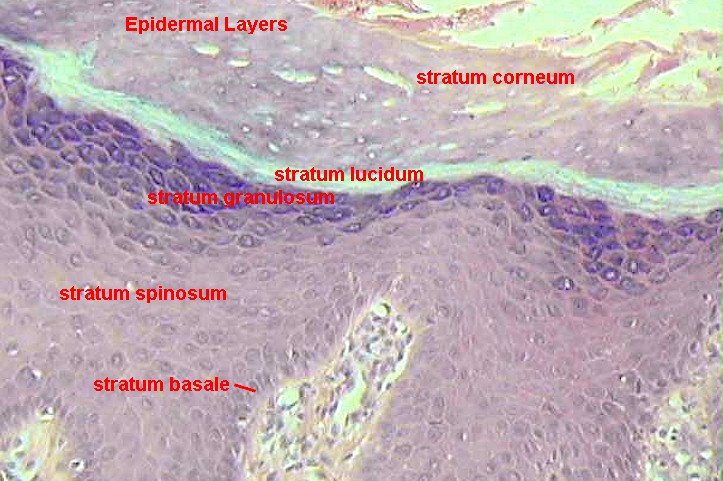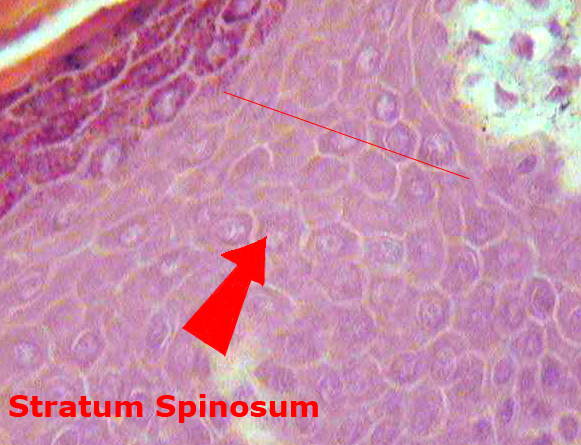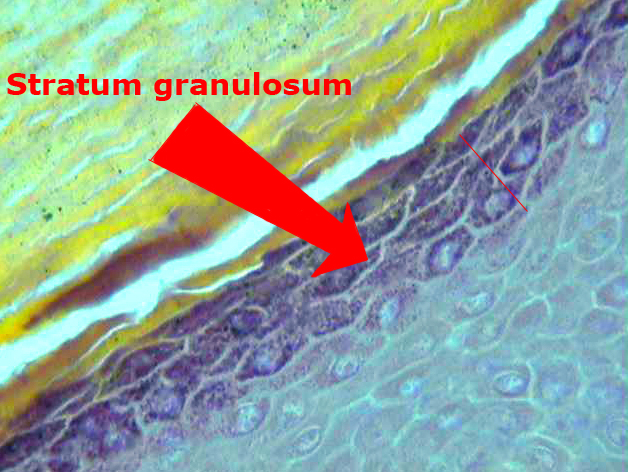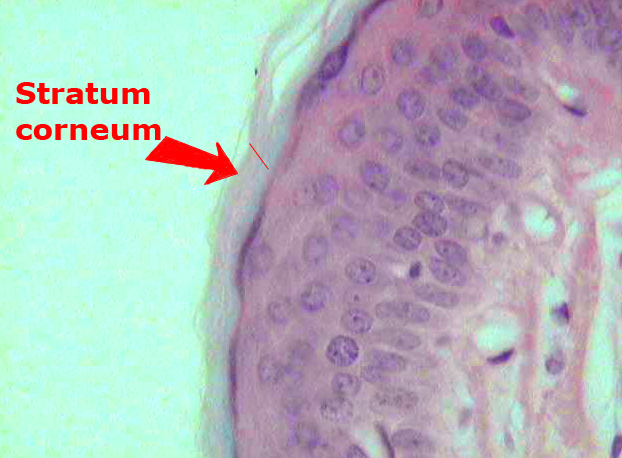The stratified squamous epithelium of the epidermis has 4 or 5 discernable layers in histological sections. The layers are:
stratum basale
stratum spinosum
stratum granulosum
stratum lucidum (in thick epidermis only)
stratum corneum

Each of the layers is described briefly below.
1) Stratum Basale (or stratum germinativum)
This is the basal, or deepest layer of the epidermis. It is also the germinal layer, or layer of cell propagation by mitosis. The typical skin cell is the keratinocyte, which, after it has been formed by mitotic division, will undergo some changes as it is pushed toward the surface of the skin.

2) Stratum Spinosum
Keratinocytes of this layer appear to have spinous extensions because the cells are shrinking and compacting while maintaining attachments to surrounding cells. This is the first transitional stage for the keratinocytes and the cells are nucleated.

3) Stratum Granulosum
These keratinocytes stain darkly with a basic stain because of keratohyalin, a substance being produced in this layer which is an intermediate in the formation of keratin. Nuclei are dissolving and cells are dying.

4) Stratum Lucidum
This layer is only seen in thicker layers of epidermis. In stained slides this layer can be seen as a more translucent layer without nuclei. The layer is translucent because it contains a non-staining biochemical product that will be converted into keratin in the stratum corneum.

5) Stratum Corneum
This layer consists of flattened dead cells on the surface of the skin containing keratin, a firm, and resilient protein.
